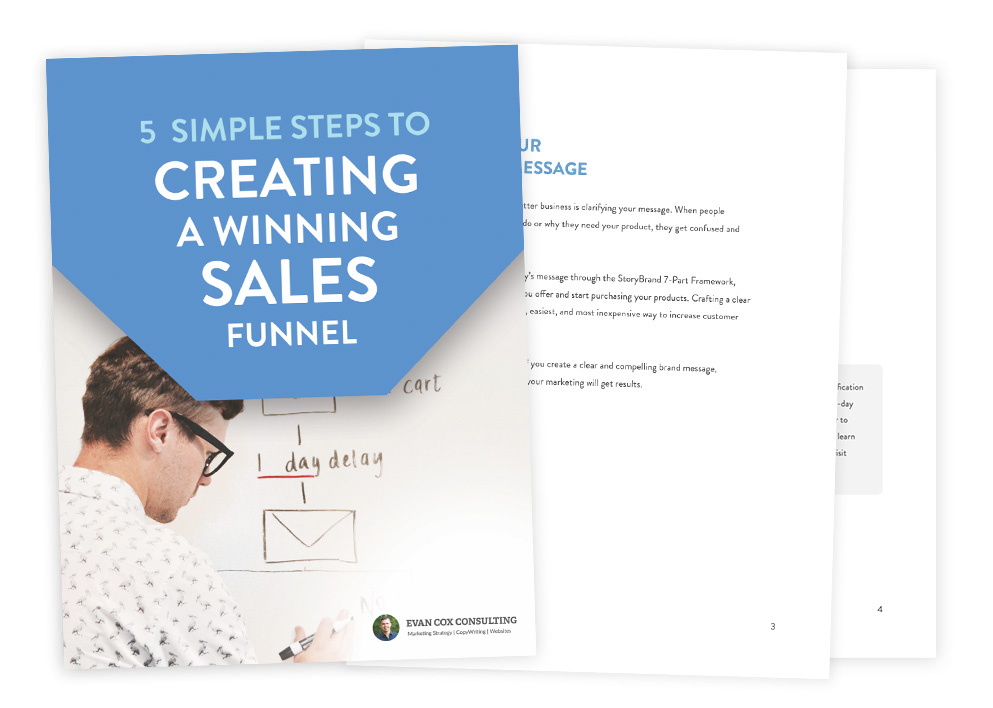Once you have a clear brand message for your company or organization, it’s time to put it to good use with the right content.
In the words of entrepreneur Matt Gray, “content increases your surface area for success”. Here are 7 things to remember that will enable you to create compelling content that resonates with your audience.
#1: Address the questions your audience is asking
While it sounds simple, too many brands need to remember to authentically and transparently answer the concerns of their readers and potential clients. In the They Ask, You Answer Framework, Marcus Sheridan provides a full playbook for executing this content strategy.
Whether it be price, detailed reviews, or even a comparison against competitors, taking time to answer your target audience’s most pressing questions is a valuable exercise.
#2: Impact is incremental
We all want to see immediate results, right? In content marketing, though, it’s important to remember that long-term impact is incremental. There are very few one-hit wonders.
Investing in blog writing, LinkedIn posting, or a podcast likely won’t drive revenue right away. However, creating the right content has a compounding effect over time. Furthermore, learning the discipline of content creation is just as valuable as the output.
Remember, doing enough of the seemingly small things will turn into the impact you want your brand to have on the world.
#3: The best content is hyper-specific
A blog titled “roofing best practices” is too generic if you operate a roofing business. Instead, consider a title like this: “Time-tested tips to help homeowners select the right roofer for their next project.”
Once you’ve identified the questions your target audience needs answered, get specific and detailed. Answer the question is a variety of formats, channels, and ways. The more thorough you can be, the more potential customers and clients will trust you.
#4: The highest motives bring the greatest motivation
A long-term mentor has reminded us of this on more than one occasion. It’s true in life—and it’s true in marketing.
The highest motive brings the greatest motivation. There are many acceptable reasons for doing business and creating content.
- It’s ok to want to make money.
- It’s perfectly acceptable to want to grow your business.
- Your organization must be profitable.
But, that’s only one of the pieces nestled into your marketing puzzle. Motives matter.
Let’s say you’re a roofing company aiming to sell more roofs and grow your business. If the motivation stops there, your content will likely fall short. It’s too transactional. But what happens instead if you’re that same roofing company with the motivation to provide a valuable service that helps people feel safe and proud of their home?
The content you create and the message you send out into the marketplace will be about providing the utmost value.
When it comes down to it, we need to remember that our highest motive brings the greatest motivation.
The greater the motivation, the greater the impact. The greater the impact, the more your bottom line typically grows in the process.
#5: Your content should make assumptions
You know what they say about making assumptions, right? Although when it comes to content marketing, we say make assumptions. The right kind of assumptions.
Here’s why. Your audience can feel it when you believe in them. That’s why it’s essential to write content that always assumes their best intent.
It’s about giving them the benefit of the doubt. We often read content and quickly realize that the author made a lot of assumptions. They’ll say things that accidentally imply the reader hasn’t done anything yet.
Maybe they have—maybe they haven’t.
Instead, we love reading content where the author intentionally swaps that tone out to optimize what they have already done.
Why? “Optimize” assumes your reader has done some hard work, set a foundation, and is ready to build on it.
The point isn’t how much hard work they’ve done or haven’t. The important thing is readers can feel the difference when you acknowledge their effort and create content that reminds them that you believe in them.
#6: Replicate with content, then iterate
There’s often a flaw in how we attempt to replicate success with our content marketing.
It’s challenging to launch a service or product (We’ve launched 5 of our own and counting). And when you see it finally resonate with an audience, it’s natural to think now it’s time to search for the next offer that will hit big too!
While this might work, it comes with risk. You’ve likely got to start over from scratch. Instead, the best path toward replicating success is to iterate on the core of the first offer.
Here’s an example: a client of ours offers roofing and home exterior services for homes and businesses here in the Midwest. Searching for the next big offer for them could look like starting up a landscaping service that is “technically” exterior but requires more expertise, tools, and overhead. Instead, replicating on their success has turned into…
- We successfully provide roofs and exteriors for homes and businesses. Let’s expand this to churches too.
- We have seasonal downtime in the Winter. Let’s offer a Christmas light service during the holidays to roofing clients that keep us busy, use our existing equipment and people, and is easy to upsell year-round as an ongoing subscription service.
Writing, recording, or creating new content from scratch is okay. It’s even better to take existing content and repurpose or expound on it.
#7: Create timely and timeless content
There are many important components to building an effective content strategy. Timely content shows your relevance against current trends and happenings in your market.
Timeless content is evergreen, sustainable, and stands the test of time. Consider how you can create content in both categories in your social posts, blogs, and emails.
#8: The power of compounding content
Remember: the right content expands your surface area for success. It’s magical. Write a blog post once so it can be ready by thousands. Craft an onboarding email sequence that can be automatically sent with ease.
Now, not everything is one and done. Yet, the more you expand your content library and hone your skills, the easier it is to communicate and build trust with potential, new, and existing customers (or clients).


